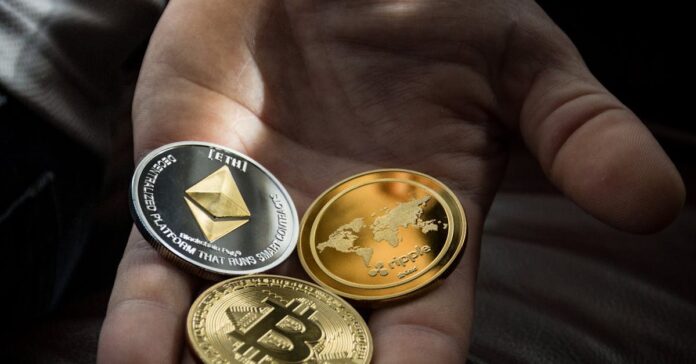In the rapidly evolving world of cryptocurrency and blockchain technology, a new sector has emerged as the top performer, eclipsing the growth of industry giants like Ethereum (ETH) and Bitcoin (BTC). Real-world asset tokens (RWA Tokens) has captured the attention of investors and industry experts alike, showcasing its remarkable potential to transform traditional finance. The tokenization of real-world assets is revolutionizing the way we think about ownership, liquidity, and accessibility in various asset classes, from real estate and art to intellectual property and beyond.
The Surge in RWA Tokenization
Data from the leading crypto analytics platform, Artemis Terminal, reveals a remarkable trend – tokens in the RWA tokenization landscape achieved a staggering 61.98% performance over the past month. This average percentage growth not only outpaced Ethereum’s 26.1% and Bitcoin’s 14%, but it also outshone the performance of other crypto narratives. The rise of tokenized real-world assets is a testament to the growing interest in this innovative sector and its potential to bridge the gap between traditional finance and the world of crypto.
High-Profile Real-World Asset Tokens Initiatives

The surge in RWA tokenization can be attributed to a series of high-profile asset tokenization projects that have gained traction in recent months. One such example is Galaxy Digital’s multimillion-dollar loan, secured by a 316-year-old Stradivarius violin, which was tokenized as a non-fungible token (NFT). This innovative approach ensures robust security for Galaxy Digital while providing flexibility in asset management, as the physical violin remains securely stored in Hong Kong. By leveraging smart contracts and the immutability of blockchain technology, tokenizing real-world assets offers enhanced transparency, liquidity, and fractional ownership opportunities.
Regulatory Developments
Alongside these high-profile tokenization initiatives, regulatory discussions have also played a crucial role in driving the growth of the real-world tokenization sector. The U.S. Financial Services Committee held a hearing titled “Next Generation Infrastructure: How Tokenization of Real-World Assets Will Facilitate Efficient Markets.” This hearing evaluated the need for enhanced regulations to support the tokenization of real-world assets and derivative products, signaling a growing recognition of the sector’s importance. Establishing a clear legal framework and ensuring regulatory compliance, including anti-money laundering (AML), know your customer (KYC), and data protection measures, will be crucial for the widespread adoption of tokenized RWA.
Outperforming Established Crypto Sectors

The remarkable performance of RWA tokenization tokens has not gone unnoticed. Data from Artemis Terminal reveals that these tokens outpaced the growth of other established crypto sectors, including the Bitcoin and Ethereum ecosystems. The rise of tokenized real-world assets is reshaping the crypto landscape, attracting investors seeking tangible, real-world value and stability in the volatile world of digital assets.
Bitcoin Ecosystem Outperforms BTC Itself
Interestingly, tokens in the Bitcoin ecosystem performed more commendably than BTC itself, with an average growth rate of 22.2%. This suggests that the broader Bitcoin ecosystem is attracting significant investor interest and driving innovation beyond the flagship cryptocurrency. The integration of real-world assets into the Bitcoin ecosystem through tokenization is opening up new avenues for growth and diversification.
Meme Coins Trail Behind
In contrast, meme-based coins registered only a 7% growth over the past month, significantly lagging behind the RWA tokenization sector. This highlights the growing maturity and sophistication of the crypto market, where investors are increasingly seeking out innovative and practical applications of blockchain technology. While meme coins may generate short-term hype, the long-term value proposition of tokenized real-world assets is becoming increasingly apparent.
Regulatory Clarity and Industry Outlook
The surge in RWA tokenization has also sparked discussions around the need for regulatory clarity to support the sector’s growth. The recent U.S. Financial Services Committee hearing brought together industry experts and policymakers to explore the potential of tokenizing real-world assets and derivative products. Establishing a clear legal framework and ensuring regulatory compliance will be crucial for the widespread adoption and growth of the RWA tokenization sector.
Regulatory Discussions and Implications
The hearing featured notable industry figures, including Carlos Domingo, Co-founder and CEO of Securitize, and Robert Morgan, CEO of the USDF Consortium, who provided insights from the RWA tokenization industry. Lilya Tessler, Partner at Sidley Austin LLP, and Nadine Chakar, Global Head of Digital Assets at the Depository Trust and Clearing Corporation, contributed perspectives from the traditional financial markets. Additionally, Professor Hilary Allen from the American University Washington College of Law offered an academic viewpoint.
While the hearing highlighted the ongoing debate around the integration of blockchain technology into traditional finance, it also underscored the potential for regulatory clarity to pave the way for broader adoption of tokenization. Establishing clear guidelines for asset tokenization platforms, token issuance, token transfers, and token management will be essential for fostering trust and confidence in the RWA tokenization sector.
Industry Leaders’ Optimism
The long-term outlook for the RWA tokenization sector remains optimistic, with industry leaders expressing confidence in its transformative potential. BlackRock CEO Larry Fink has noted the ability of tokenization to enable customized strategies and instantaneous settlement of bonds and stocks, potentially reducing settlement costs significantly. The integration of real-world assets into the crypto ecosystem through tokenization is poised to revolutionize traditional finance, offering enhanced efficiency, liquidity, and accessibility.
Furthermore, Franklin Templeton CEO Jenny Johnson has emphasized the transformative impact of tokenizing real-world assets, citing examples such as Rihanna’s NFT royalties and loyalty programs at the St. Regis in Aspen. Johnson believes that the combination of loyalty programs and real-world assets, enabled by blockchain technology, will become increasingly prevalent. The potential applications of RWA tokenization are vast, spanning various industries and asset classes.
Fostering Financial Inclusion and Savings Habits
The integration of RWA tokenization into mainstream investment practices is not only about technological innovation but also about fostering greater financial inclusion and encouraging savings habits among younger generations. By lowering barriers to entry and enabling fractional ownership, tokenized real-world assets have the potential to democratize access to previously inaccessible investment opportunities.
Lowering Barriers to Entry
Johnson highlighted that tokenizing assets, such as Franklin Templeton’s tokenized money market fund, offers lower entry points and operational costs, making professional asset management more accessible to younger investors. By allowing smaller, more manageable investments held in a digital wallet, tokenization can encourage younger people to save for retirement. The token economy and tokenomics of RWA tokenization projects can be designed to incentivize long-term holding and savings habits.
Transforming Traditional Finance
Johnson envisions traditional finance institutions increasingly leveraging blockchain technology to facilitate greater financial inclusion and encourage savings habits among younger generations. This integration of tokenization into mainstream investment practices aims to bridge the gap between traditional finance and the emerging world of decentralized finance (DeFi). By embracing RWA tokenization, traditional financial institutions can tap into new markets, attract younger investors, and drive innovation in the industry.
The Future of RWA Tokenization
The surge in RWA tokenization, outpacing the growth of established crypto sectors like Ethereum and Bitcoin, underscores the sector’s immense potential and the transformative impact it can have on the financial industry. As more real-world assets are tokenized, we can expect to see a paradigm shift in the way we think about ownership, liquidity, and accessibility.
Driving Innovation and Efficiency
The high-profile tokenization initiatives and regulatory discussions surrounding the RWA sector highlight its ability to drive innovation and enhance efficiency in traditional finance. By tokenizing real-world assets, investors can access customized strategies, instantaneous settlements, and reduced transaction costs, revolutionizing the way financial markets operate. The use of smart contracts and blockchain technology ensures transparency, immutability, and data security in tokenized transactions.
Fostering Financial Inclusion
Moreover, the integration of RWA tokenization into mainstream investment practices holds the promise of greater financial inclusion and the cultivation of savings habits among younger generations. By lowering barriers to entry and enabling more accessible investment opportunities, tokenization can empower a wider demographic to participate in the financial ecosystem. The token economy and tokenomics of RWA tokenization projects can be designed to incentivize long-term holding, savings habits, and responsible investing.
Navigating the Regulatory Landscape
As the RWA tokenization sector continues to evolve, the need for regulatory clarity and support becomes increasingly paramount. The ongoing discussions and hearings between industry experts and policymakers will play a crucial role in shaping the future of this rapidly growing sector, ensuring its seamless integration into the traditional financial landscape. Establishing clear guidelines for asset tokenization platforms, token issuance, token transfers, and token management will be essential for fostering trust and confidence in the RWA tokenization sector.
Conclusion
The remarkable performance of real-world asset tokenization, outpacing the growth of Ethereum, Bitcoin, and other crypto narratives, underscores the transformative potential of this emerging sector. The combination of high-profile tokenization initiatives, regulatory developments, and industry leaders’ optimism suggests that RWA tokenization is poised to redefine the boundaries of traditional finance, fostering innovation, efficiency, and greater financial inclusion.
As the crypto market matures and investors seek out practical applications of blockchain technology, the RWA tokenization sector emerges as a beacon of promise, showcasing the power of seamlessly bridging the physical and digital realms. The future of finance is undoubtedly intertwined with the rise of real-world asset tokenization, and the journey ahead promises to be one of remarkable growth and transformation. By embracing tokenized real-world assets, we can unlock new opportunities, democratize access to scarce resources, and pave the way for a more inclusive and efficient financial system.
FAQs
What is real-world asset (RWA) tokenization?
Real-world asset tokenization revolutionizes ownership, liquidity, and accessibility in asset classes like real estate, art, and intellectual property through blockchain technology.
What are the key factors driving the surge in RWA tokenization?
The surge is driven by remarkable performance, high-profile tokenization initiatives, and regulatory discussions, showcasing the potential to bridge traditional finance and the world of crypto.
How are regulatory developments impacting RWA tokenization?
Regulatory discussions and hearings are crucial for establishing clear legal frameworks, ensuring compliance, and fostering trust and confidence in the RWA tokenization sector.
What is the long-term outlook for RWA tokenization?
Industry leaders express confidence in its transformative potential, fostering financial inclusion, driving innovation, and revolutionizing traditional finance through the integration of real-world assets into the crypto ecosystem.













